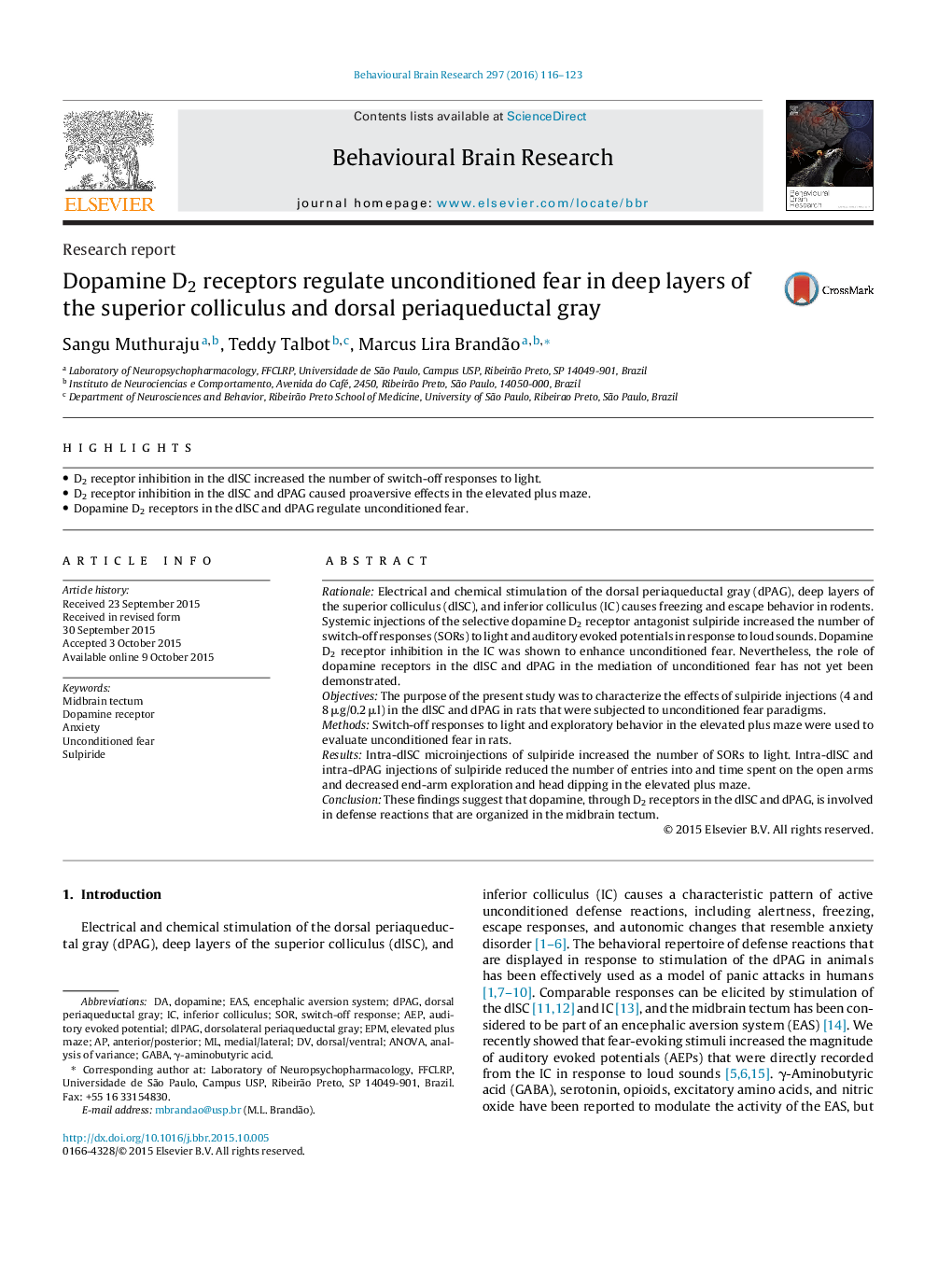| Article ID | Journal | Published Year | Pages | File Type |
|---|---|---|---|---|
| 6256375 | Behavioural Brain Research | 2016 | 8 Pages |
â¢D2 receptor inhibition in the dlSC increased the number of switch-off responses to light.â¢D2 receptor inhibition in the dlSC and dPAG caused proaversive effects in the elevated plus maze.â¢Dopamine D2 receptors in the dlSC and dPAG regulate unconditioned fear.
RationaleElectrical and chemical stimulation of the dorsal periaqueductal gray (dPAG), deep layers of the superior colliculus (dlSC), and inferior colliculus (IC) causes freezing and escape behavior in rodents. Systemic injections of the selective dopamine D2 receptor antagonist sulpiride increased the number of switch-off responses (SORs) to light and auditory evoked potentials in response to loud sounds. Dopamine D2 receptor inhibition in the IC was shown to enhance unconditioned fear. Nevertheless, the role of dopamine receptors in the dlSC and dPAG in the mediation of unconditioned fear has not yet been demonstrated.ObjectivesThe purpose of the present study was to characterize the effects of sulpiride injections (4 and 8 μg/0.2 μl) in the dlSC and dPAG in rats that were subjected to unconditioned fear paradigms.MethodsSwitch-off responses to light and exploratory behavior in the elevated plus maze were used to evaluate unconditioned fear in rats.ResultsIntra-dlSC microinjections of sulpiride increased the number of SORs to light. Intra-dlSC and intra-dPAG injections of sulpiride reduced the number of entries into and time spent on the open arms and decreased end-arm exploration and head dipping in the elevated plus maze.ConclusionThese findings suggest that dopamine, through D2 receptors in the dlSC and dPAG, is involved in defense reactions that are organized in the midbrain tectum.
